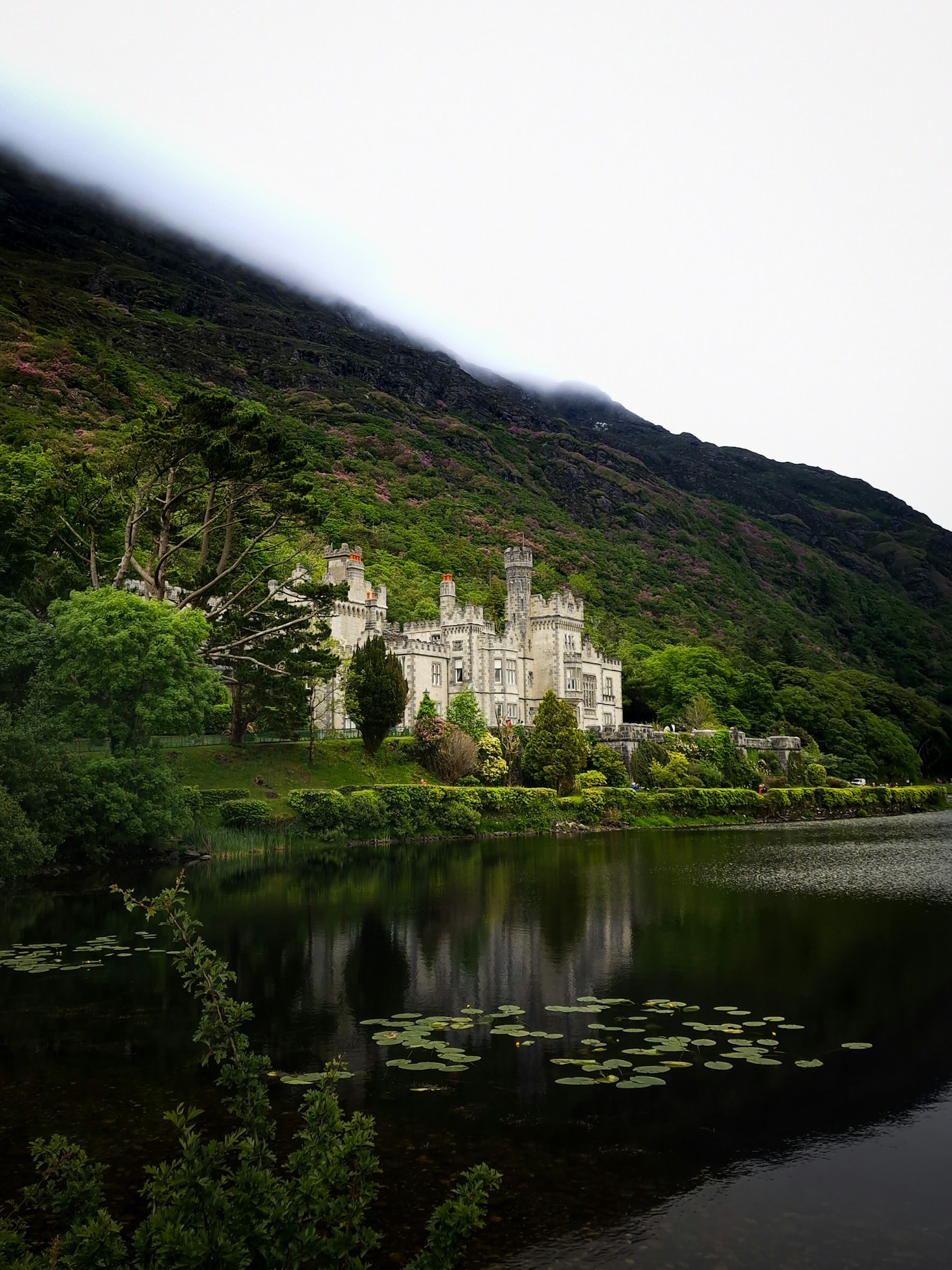“Legends & Lore: Unveiling the Mystique of Ireland’s Fortresses” invites readers to embark on a journey that transcends mere architectural appreciation. The title suggests that the article will navigate the rich tapestry of myths, historical narratives, and local folklore associated with Ireland’s ancient fortresses. Rather than focusing solely on the stone and mortar, the piece promises to reveal the deeper stories—tales of heroic battles, mysterious hauntings, and the enduring cultural impact these landmarks have had over centuries.
By delving into both well-documented historical events and the more enigmatic urban legends that swirl around these castles, the article aims to illustrate how heritage is interwoven with myth. This dual perspective helps readers understand that every abbey, tower, or crumbling wall is not just a relic of the past, but also a vibrant storyteller, echoing traditions and memories passed down through generations. Ultimately, “Exploring the Legends Behind Ireland’s Fortresses” sets the stage for a narrative that is as much about the spirit and the lore of these renowned sites as it is about their physical presence, encouraging a renewed appreciation of Ireland’s cultural and historical legacy.
“In the quiet embrace of history’s ancient stones, we discover that even the simplest moments can echo with profound wisdom. Like the enduring ruins of Ireland’s fortresses—each weathered brick holding a century of secrets—our pauses in life’s constant pace allow us to unearth insight, strength, and the promise of renewal. Embrace the stillness and let the whispers of the past guide you to clarity for the future.”
Ireland’s fortresses, rich with historical intrigue and legendary charm, beckon us to look beyond their ancient stones and explore the lives and stories that brought them to life. Let us step into the shadows of some of Ireland’s most iconic fortresses and uncover the myths that make them unforgettable.
1. Leap Castle- The most haunted Castle in Ireland
Located in County Offlay, Leap Castle is infamouse for its violent history and paranormal activity. Built in the 13th century by the O’Bannon clan, it later became the stronghold of the ruthless O’Carrols, who are said to have murdered a priest in front of his congragation in what is know as “The Bloody Chapel.”
LEGEND HAS IT:
- The castle is said to be home to a malevolent spirit known as the “Elemental,” described as a dark, shadowy figure that terrorizes visitors.
- A hidden dungeon called the “oubliette” was discovered beneath the castle, where prisoners were tortured and left to die in horrific conditions.
- Leap Castle was the site of violent clan battles, contributing to its eerie reputation and tales of restless spirits.
- Some believe the castle was built on ancient sacred ground, adding to the supernatural energy reported by visitors.
- Numerous ghost hunters and paranormal investigators have captured unexplained phenomena, including cold spots, disembodied voices, and apparitions.
- The castle’s history of betrayal, murder, and tragedy fuels stories of curses and lingering spirits seeking vengeance.
2. Blarney Castle- The Gift of the Gab
Blarney Castle is famous for the “gift of gab,” which means being good at speaking. The legend says that if you kiss the Blarney Stone, high up on the castle walls, you will gain the power to speak well and persuade others. This tradition comes from old stories where the stone was thought to be blessed by Gods or given as a special gift, starting a custom that celebrates storytelling and clever talk.
The castle, with its large medieval design and rich history, is the perfect place for this legend. Visitors lean backward over the edge, holding onto strong railings, to kiss the stone. By doing this, they connect with a long history and myths, showing how simple acts can spark the imagination and link us to Irish culture.
Whether you try the tradition for fun or with belief, kissing the Blarney Stone gives you a chance to think about how our words full of wit, creativity, and honesty shape our daily lives and stories.
LEGEND HAS IT:
- The stone was a gift from the goddess Cliodhna, given to Cormac McCarthy, the castles builder, after he helped save a woman from drowning
- Others claim its the stone of Destiny used in Scottish coronations or a piece of the Stone of Scone stolen by Robert the Bruce.
Why it matters: The legend of the Blarney stone blends myth, magic, and diplomacy – offering a whimsical touch to Irish lore with global recognition.
3. Dunluce Castle – lost to the sea
Dunluce Castle’s dramatic location and turbulent history have inspired numerous stories of ghosts and hauntings. Some say the castle is haunted by the spirits of those who perished there, especially the victims of the kitchen collapse, who are said to roam the ruins on stormy nights.
Dunluce Castle stands dramatically on the edge of a basalt outcropping in County Antrim, its ancient walls seemingly on a slow descent into the Atlantic. Once a formidable stronghold of the McQuillan and MacDonnell clans, this medieval fortress now tells a quieter tale of nature’s relentless reclaiming. Over centuries, fierce storms and tidal forces have eroded its once-proud battlements, lending the castle an aura of haunting beauty that captures the impermanence of human endeavor. The phrase “Lost to the Sea” reflects not just its precarious position but also the bittersweet reminder that even the mightiest constructions eventually yield to nature’s power. Today, Dunluce Castle inspires both awe and introspection, urging visitors to consider how history, legend, and natural forces intertwine to shape our heritage.
Legend has it:
- Locals say the castle is cursed, especially after the tragic kitchen collapse.
- Some tales speak of a banshee haunting the grounds, her cries heard during storms.
Why it matters: Dunluce embodies the peril of building against natures edge and the Irish belief that tragedy and the supernatural often walk hand in hand.
4. Carrickfergus Castle – Besieged by Ghosts
This imposing Norman fortress in County Antrim has stood for over 800 years. It has faced invasions from Scots, English and the French but still stands as one of the best preserved medievel Castles in Ireland.
Legend has it:
- legend tells of a young soldier, nicknamed “Buttoncap,” whose tragic end by mistaken identity left him vowing to haunt the castle’s ramparts forever. He was executed for murder but claimed innocence until his last breath.
- As one wanders its ancient corridors, visitors have reported eerie encounters with ghostly figures, believed to be the souls of soldiers who once defended this impregnable stronghold.
Why it matters: Carrickfergus tales reflect the tension and drama of centuries of war and the belief that injustice leaves a lingering spirit behind.
5. Castle Roche – A ladys Revenge
Built lady Rohesia de Verdum in the 13th century, this now ruined castle in County Louth comes with one of Irelandsmost dramatic love and betrayal legends.
Legend has it:
- Lady Rohesia de Verdun. Renowned for her quick temper and unyielding ambition, she vowed that her hand in marriage would be granted to the man confident enough to build a fortress worthy of her stature. When the castle was finally completed, the celebration of their union took a dramatic turn. In a shocking act of retribution, Lady Rohesia led her husband the master builder up to a high window and, in a single, decisive moment, pushed him to his demise. This brutal act of vengeance ensured that the castle remained entirely under her control, marking it forever as a monument of her uncompromised power.
Why it matters: This legend, often recounted as “a lady’s revenge,” transcends mere historical narrative. It embodies the themes of authority, betrayal, and the uncompromising pursuit of autonomy within a male dominated society. The spectral echoes of Lady Rohesia’s resolve are said to linger among the ruins, a chilling reminder of a past where passion and power could alter destiny with one fateful act. Today, Castle Roche invites visitors not only to witness the remnants of a formidable fortress but also to engage with a story that challenges conventional narratives of love and loyalty.


At this juncture, as the echoes of ancient legends blend seamlessly with vibrant modern innovation, Ireland’s fortresses emerge as dynamic repositories of cultural identity. Earlier, we traced the storied corridors of myth and historical narrative, where each castle bore witness to centuries of triumph and tragedy. Now, consider an alternative perspective: these formidable structures serve not only as relics of bygone eras but also as living canvases for contemporary creativity and community resilience. Modern technologies like virtual tours and augmented reality are breathing new life into these monuments they bridge the gap between the past and the present, inviting us to engage with history interactively and explore narratives in fresh, insightful ways. This balanced view enriches our understanding, deepening both reverence for our heritage and excitement for the innovative dialogues that continue to shape our shared cultural future.
Wrapping Up with Key Insights
In conclusion, Ireland’s legendary fortresses remind us that history is not confined to ancient stone walls they are enduring keepers of culture, resilience, and inspiration. Our exploration has revealed how these storied structures masterfully weave together myth and reality, inspiring lessons in creativity, strength, and the powerful interplay between the past and present. From the whispered legends that haunt Dunluce Castle’s edge-to-sea allure to the vibrant tales of eloquence and defiant spirits at Blarney, each fortress challenges us to reimagine our own narratives and embrace the rich tapestry of heritage that shapes our lives. Let the timeless spirit of these architectural marvels guide you to seek deeper connections with your own roots, and inspire a journey of discovery where tradition and innovation walk hand in hand.


Leave a Reply